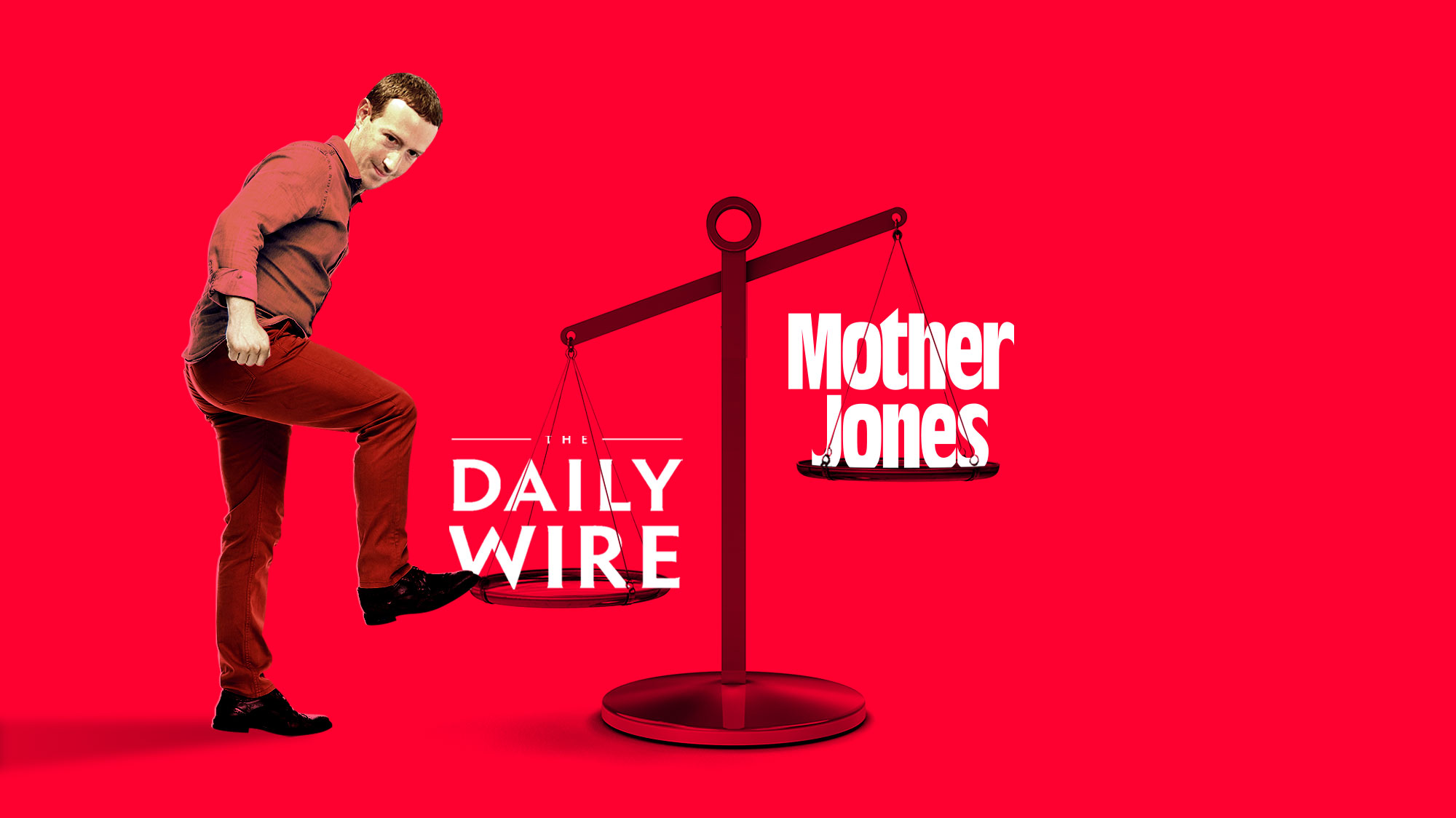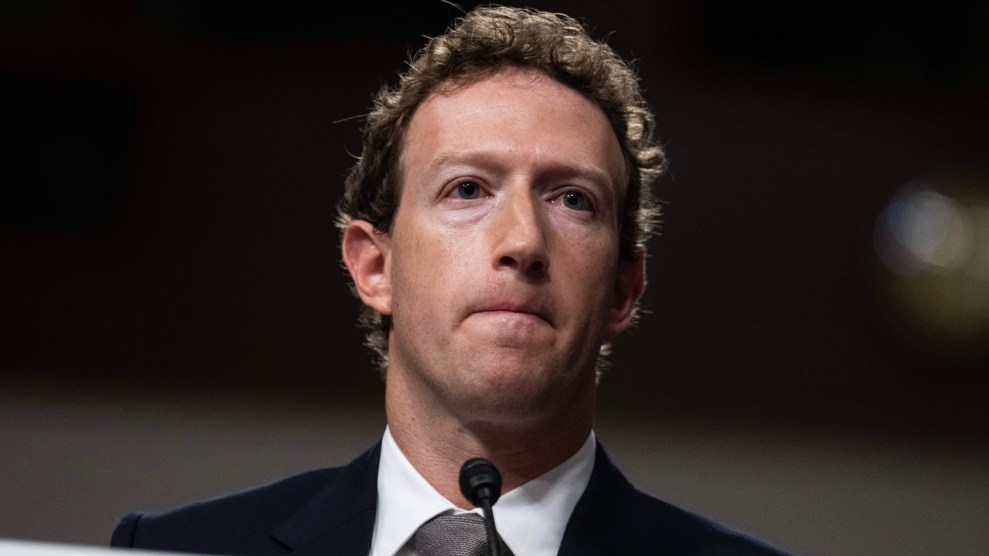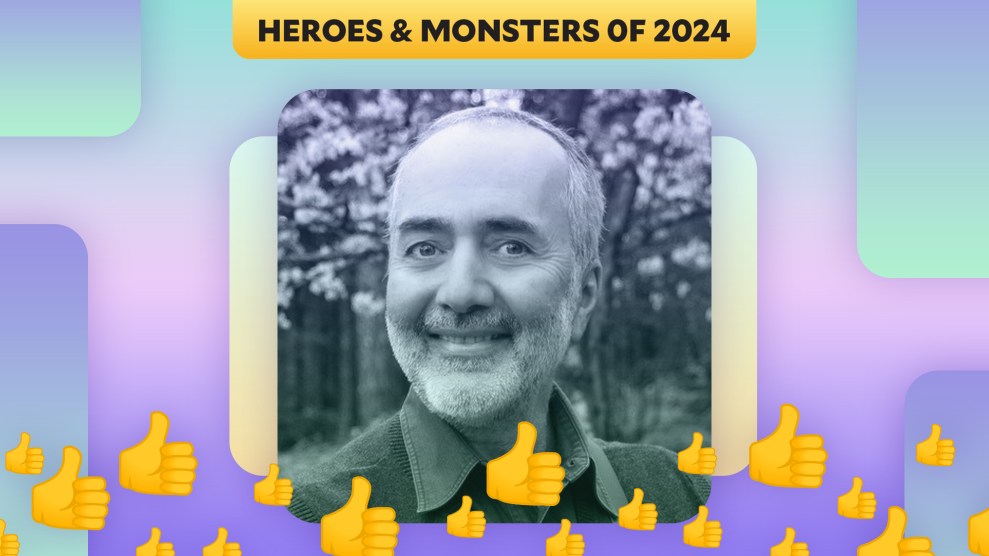Near the close of the first year of the Trump presidency, executives at Facebook were briefed on some major changes to its News Feed—the code that determines which of the zillions of posts on the platform any one of us is shown when we look at Facebook. The story the company has publicly told is that it was working to “bring people closer together” by showing us more posts from friends and family, and to prioritize “trusted” and “informative” sources of news. The changes would also reduce how much news most people see, and therefore decrease revenue for many publishers.
What wasn’t publicly known until now is that Facebook actually ran experiments to see how the changes would affect publishers—and when it found that some of them would have a dramatic impact on the reach of right-wing “junk sites,” as a former employee with knowledge of the conversations puts it, the engineers were sent back to lessen those impacts. As the Wall Street Journal reported on Friday, they came back in January 2018 with a second iteration that dialed up the harm to progressive-leaning news organizations instead.
In fact, we have now learned that executives were even shown a slide presentation that highlighted the impact of the second iteration on about a dozen specific publishers—and Mother Jones was singled out as one that would suffer, while the conservative site the Daily Wire was identified as one that would benefit. These changes were pushed by Republican operatives working in Facebook’s Washington office under Vice President of Global Public Policy Joel Kaplan (who later made headlines for demonstratively supporting his friend Brett Kavanaugh during confirmation hearings).
Asked for comment, Facebook spokesperson Andy Stone would only say, “We did not make changes with the intent of impacting individual publishers. We only made updates after they were reviewed by many different teams across many disciplines to ensure the rationale was clear and consistent and could be explained to all publishers.”
Glossed over in that non-answer answer is the fact that the changes were made with at least the knowledge of the disparate impact they would have on specific publishers. And that those changes appear to have been based, at least in part, on internal partisan concerns.
Stone would not comment on the slide deck. But according to someone who has seen it, it contained bar graphs indicating how much reach various news organizations would gain or lose under the revamped algorithm. One chart showed the Daily Wire, a site headed by conservative pundit Ben Shapiro that routinely shares false claims and malignant ideas (being transgender is a “delusion,” abortion providers are “assassins,” US Rep. Rashida Tlaib, D-Mich., is not “loyal to America”). Another graph showed Mother Jones, whose rigorously fact-checked investigative work has garnered many of journalism’s highest awards, including—just months before that Facebook presentation—being honored as Magazine of the Year at our industry’s version of the Academy Awards.
Allow us to pause briefly while we scream out of the window. This kind of false equivalence is enraging enough when lazy pundits do it. But when the most powerful media company in the world uses it as the basis for deciding what information users should see or not see, it’s more than that. It’s an attack on your ability to stay informed. It’s an attack on democracy.
If you are able to support our nonprofit journalism—donations from readers are the most important source of revenue for Mother Jones—please do that here.
To be perfectly clear: Facebook used its monopolistic power to boost and suppress specific publishers’ content—the essence of every Big Brother fear about the platforms, and something Facebook and other companies have been strenuously denying for years.
It’s also, ironically, what conservatives have consistently accused Facebook of doing to them, with the perverse but entirely intended effect of causing it to bend over backward for them instead. This past Thursday the Daily Wire’s Shapiro inveighed against Twitter and Facebook suppressing a widely discredited New York Post story on Hunter Biden: “Social media companies are so afraid of Democrats that they will voluntarily do what Democrats want so Democrats don’t come after them. This is a blackmail routine by Democrats against social media.” He calls it an “inside job” at Facebook and Twitter in which “top Democrats at these places decide that it’s time to shut down material.”
Replace “Democrats” with “Republicans” in those comments from Shapiro—who is also one of the conservative luminaries Zuckerberg has invited to his home for hours-long gab sessions—and you have exactly what appears to have happened in January 2018.
So why was Facebook changing the algorithm? In the wake of the 2016 election, it had been battling backlash for amplifying political disinformation and propaganda, foreign and domestic. But the problem that really concerned its executives was this: People were turning away from their product. After more than a year of overheated and often toxic discussion, engagement on Facebook was falling.
In late 2017, Zuckerberg told his engineers and data scientists to design algorithmic “ranking changes” that would dial down the temperature. One tool for this was prioritizing what Facebook called “meaningful social interactions” among users. Another was giving priority to news sources that Facebook’s user surveys determined to be trustworthy and informative.
But, says the former Facebook employee, there was a hitch: Everyone knew that most of the untrustworthy “junk” on Facebook, when it came to politics, originated with “conservative/conspiratorial” sites. And while Facebook was under fire from both right and left, its chief worry—now that Republicans had regulatory power in Washington—was “getting Trump off their back.”
Conservatives had been very effective at working the refs by accusing the platforms of liberal bias, especially after a widely publicized 2016 incident in which platform moderators were accused of suppressing pro-Trump content. After that, says a former employee who worked on News Feed, it was made clear that “we can’t do a ranking change that would hurt Breitbart—even if that change would make the News Feed better.” (Breitbart News, where Steve Bannon was still executive chair, seems to have been a particular obsession.)
So, too, with the January 2018 changes: “Republican lobbyists in the DC office said, ‘Hold on, how will it affect Breitbart?’” recalls another ex-employee. Testing showed that the proposed changes would take a “huge chunk” out of Breitbart, Gateway Pundit, the Daily Wire, and the Daily Caller. There was “enormous pushback. They freaked out and said, ‘We can’t do this.’”
The code was tweaked, and executives were given a new presentation showing less impact on these conservative sites and more harm to progressive-leaning publishers—including Mother Jones. “The problem was that the progressive outlets were real [news] outlets like yours,” recalls the ex-employee, “and the right ones were garbage outlets. You guys were one of the outlets who got singled out to balance the ledger.”
It was not the first time that Kaplan had stepped up to protect conservative disinformation. The Washington Post has reported that in December 2016, senior leaders were briefed on an internal investigation known as Project P (for propaganda) showing that right-wing accounts, most of them based overseas and most with “financial motives,” were behind a lot of the viral disinformation on the platform. But Kaplan objected to disabling these accounts because “it will disproportionately affect conservatives.”
More recently, the newsletter Popular Info reported last year that whenever conservative sites were accused of violating Facebook’s policies—as when Shapiro’s Daily Wire allegedly created a network of pages to increase traffic—Kaplan stepped up to protect them. (The Daily Wire’s co-CEO Jeremy Boreing told us, “We endeavor to abide by the ever-changing rules of the platforms on which we operate, but we’re also an aggressive organization.”) It was also reportedly Kaplan who in 2018 pushed for the Daily Caller, which has been regularly excoriated for publishing misinformation, including fake nudes of Rep. Alexandria Ocasio-Cortez, to be brought in as one of Facebook’s fact-checking partners.
Back to January 2018. The graphs and slides appear to have appeased Kaplan. Zuckerberg signed off on the algorithm changes. And soon, the million-plus readers who had chosen to follow Mother Jones saw fewer of our articles in their feeds. Average traffic from Facebook to our content decreased 37 percent between the six months prior to the change and the six months after.
But the Daily Wire continued to thrive, as did the Daily Caller, Breitbart, and Fox News. Boreing says the Daily Wire saw “a significant unexplained decline in traffic in October 2017, which began to recover in December,” and that nothing “pronounced” happened as a result of the January changes. And while social media data is notoriously hard to measure, Nieman Lab’s Laura Hazard Owen, using data from the analytics company Newswhip, found that after the changes, right-wing sites saw, if anything, more engagement on Facebook. And though we don’t know how the algorithm has evolved since then, to this day the news stories with the highest Facebook engagement often come from right-wing opinion sites. This summer the Daily Wire had the most Facebook engagements of any English-language publisher in the world, according to Newswhip.
In other words, for more than two years, the news diets of Facebook audiences have been spiked with hyperconservative content—content that would have reached far fewer people had the company not deliberately tweaked the dials to keep it coming, even as it throttled independent journalism. For the former employee, the episode was emblematic of the false equivalencies and anti-democratic impulses that have characterized Facebook’s actions in the age of Trump, and it became “one of the many reasons I left Facebook.”
When Zuckerberg announced these algorithm changes in January 2018, he talked about “bringing people closer together” and fighting “sensationalism, misinformation and polarization.” Unmentioned went the discussions about helping conservative publishers.
In fact, Facebook seems to have not just elided but actively concealed what it was doing. Several of us at Mother Jones were in meetings with company officials during this period. At a journalism conference, one of us was whisked into their corporate suite, given a logoed water bottle, and complimented about the work our team had done to share quality journalism on the platform. Ben Dreyfuss, who heads up our social media work, was told by the company’s News Partnerships team that the “trusted news” algorithm changes should have no different impact on Mother Jones than on other “quality publishers.”
How many other sites were similarly throttled? The ex-employee doesn’t recall the other publishers named in the deck, but Slate, for one, has reported a dramatic drop in its Facebook referrals after January 2018. Joe Romm, formerly of ThinkProgress, noted that site’s traffic took a “big hit.” Did the changes affect outlets like the New York Times and National Public Radio? And how was this actually done? Which criteria were changed, how broadly, and for how long? And how much of the information you see on this powerful platform is shaped by partisan political considerations inside a company obsessed with avoiding regulation?
There’s a deck out there that could help unlock some of the answers. Publishers and regulators need to see it.
This article has been updated to correct Joe Romm’s affiliation with progressive news outlet ThinkProgress.
















